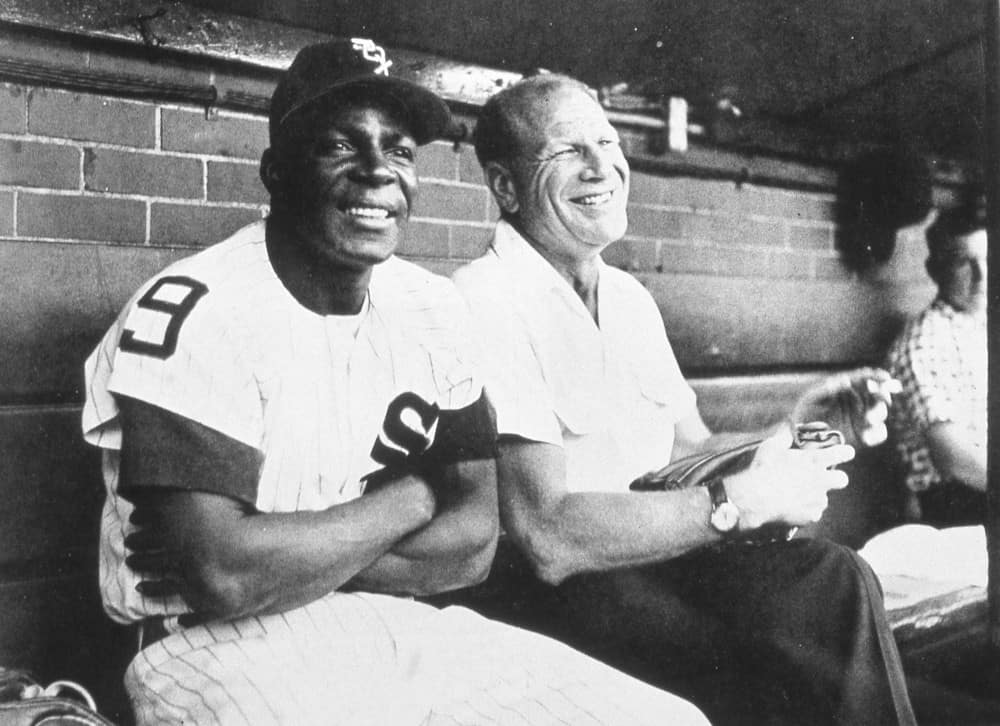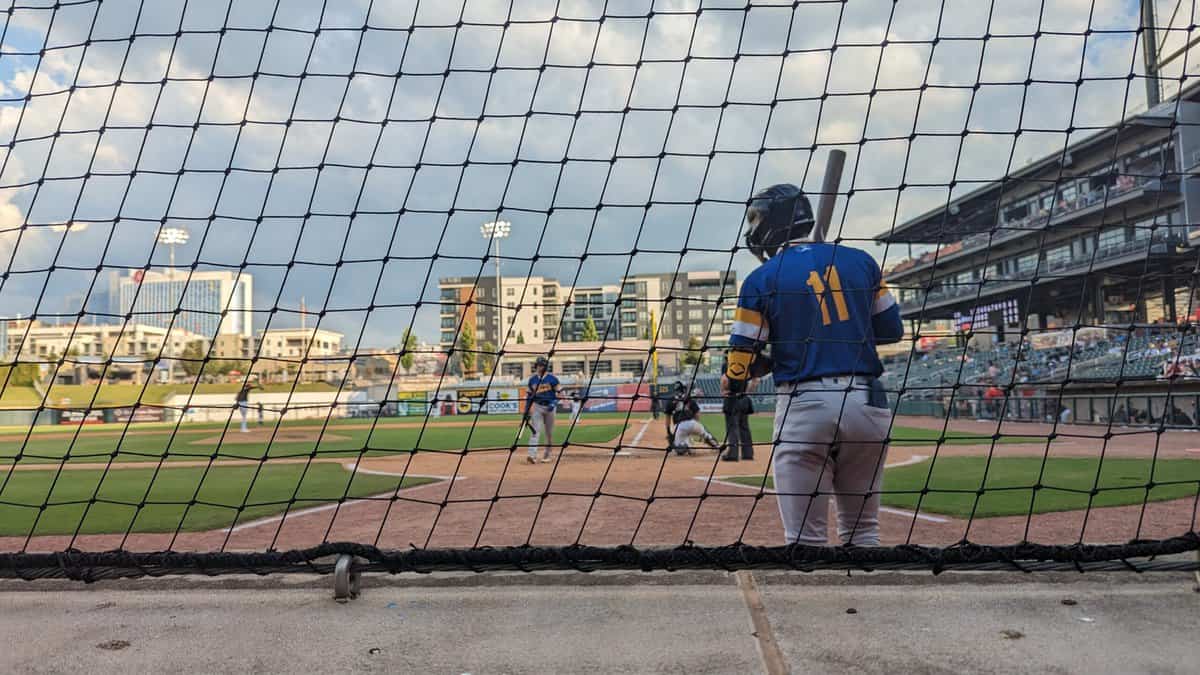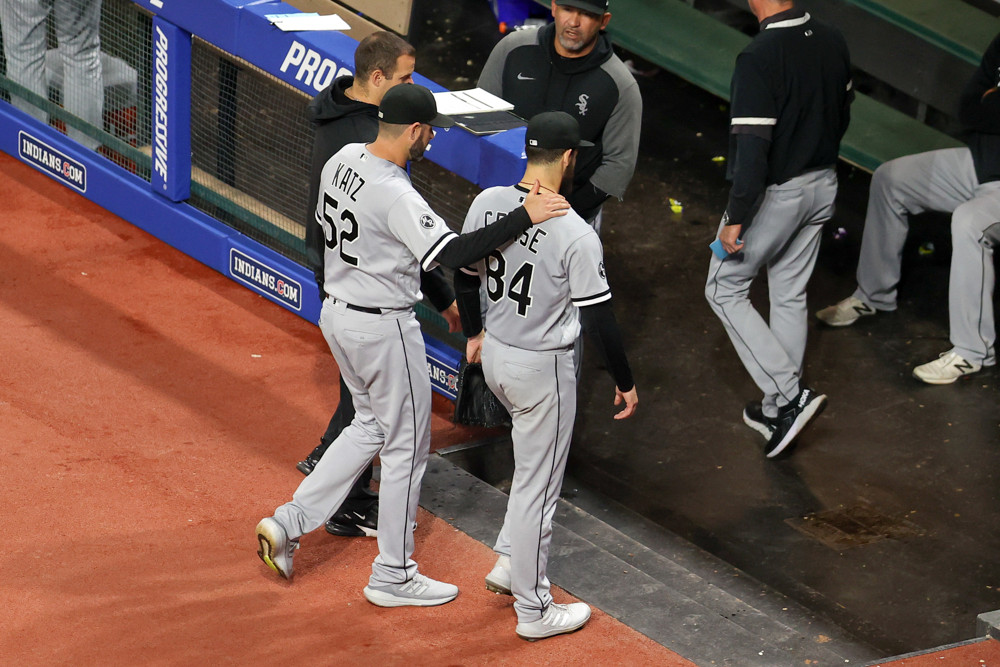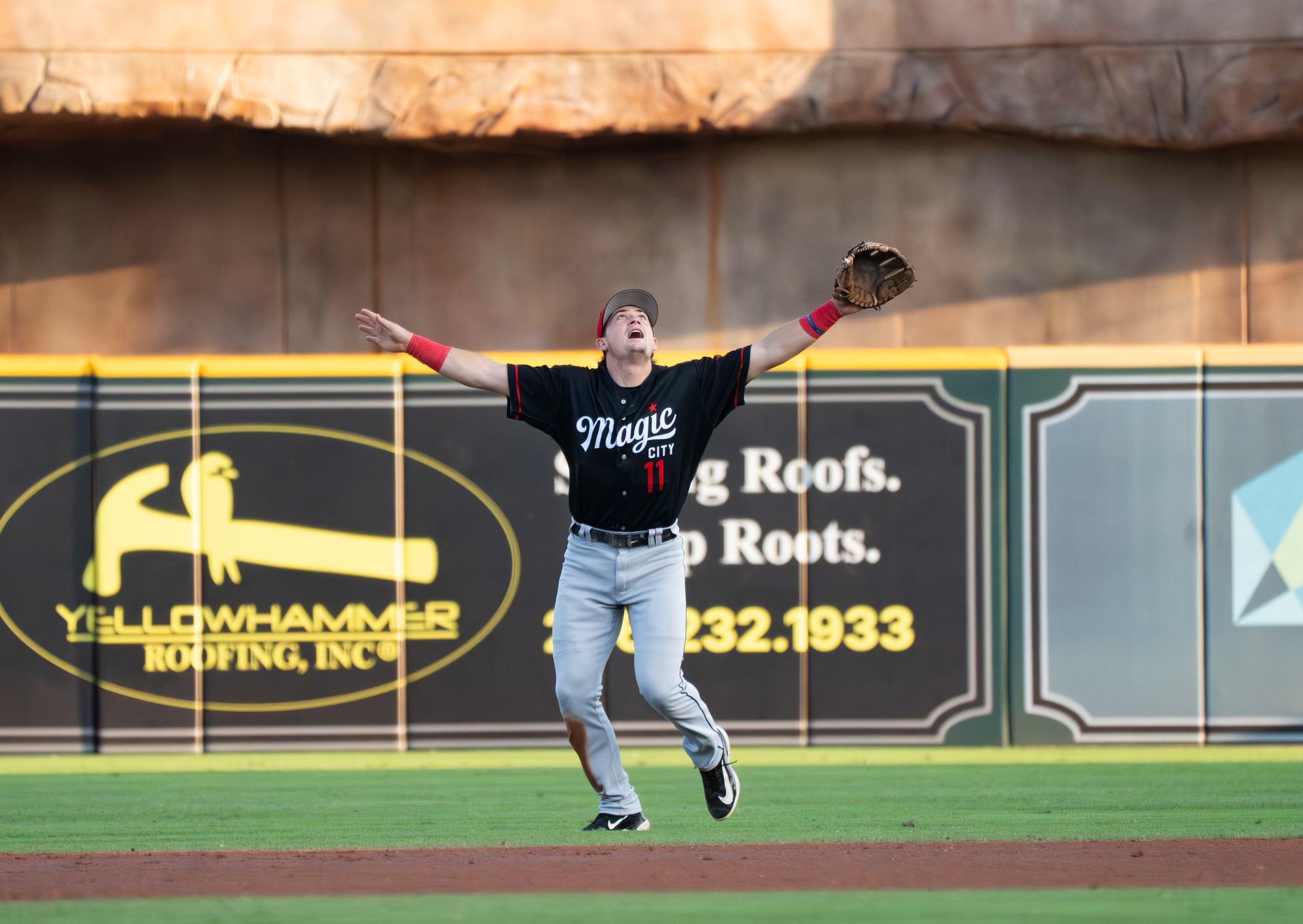At 21.1 percent, White Sox starting pitching had the fifth-worst strikeout rate in baseball last year, and it would be contractually and socially inappropriate if Garrett Crochet or Erick Fedde walked through that door.
They also had the sixth-worst ERA- (a FanGraphs run environment-adjusted figure) as a group with those two pitching at an All-Star level, which nods to why pitching coach Ethan Katz points to the growth potential in simply getting a lot of guys who were debuting in the majors last year to be more consistent.
"We are not the biggest swing-and-miss group there is," Katz said in a phone call. "Garrett Crochet was the best in the business at being able to get swing-and-miss. Dylan Cease was the best in the business at getting swing-and-miss. It's hard [to replace] guys who have elite, elite weapons. But we're hoping that some of our young guys getting their footing, getting into better counts, we should be able to miss a little bit more bats than we did last year."
That said, the two veteran additions to the rotation, which are likely their last significant signings of the offseason, are both contact-heavy types who need improvements from the White Sox defense to truly thrive. The one time Martín Pérez cracked a 20 percent strikeout rate for a full season, it led to his one All-Star appearance in 2022, and even working out of the pen frequently has not pushed sinkerballer Bryse Wilson into that stratosphere.
Pérez only officially joins the White Sox this week, but Katz has been at work gaining familiarity with him, calling both pitching coaches the veteran lefty had last year: Oscar Marin of the Pirates and Ruben Niebla of the Padres. A lot of the attributes one would expect when a rebuilding team signs a well-traveled 33-year-old pitcher came to the forefront: excellent clubhouse presence, willing to be the guy the teams leans on to save the bullpen in the wake of a blowup start, etc.
Finding a smoking gun for why Pérez was able to put together a 3.46 ERA over his 10 starts in San Diego is not the most exhilarating search, since the 96 points of BABIP that dropped off his ledger seems like the simplest and also least satisfying answer. Driveline presented a metric to quantify the effect of arsenal breadth at SaberSeminar last summer, but until that becomes a mainstream stat, we sort of have to take Niebla's word for it that increased use of Pérez's curveball down the stretch helped his sinker perform better. Neither pitch is a wipeout offering, and Katz's takeaway is that the left-hander is still better off using a cutter to come inside on right-handers, but the wide velocity differential is key for Pérez's efforts to conquer the low-and-away quadrant for weak contact.
Wilson is the sort of acquisition where you assume/hope the team has a specific plan for getting more out of a pitcher upon potentially expanding his role from swingman to starter, coming off a season where he out-performed run prevention estimations (4.04 ERA to a 5.35 xERA, for example).
"The one thing with with Bryse that's kind of interesting is that he dropped his [arm] slot a little bit, which no one has seen," Katz said. "I always love the lower slot guys, because they can do so much with the ball with the angles that they can create. So I'm super excited to kind of see where he's at, and he feels really good about it. Obviously a pitcher that's confident is step No. 1."
The effort to harness Wilson's lower slot will be an early measurable impact of the White Sox hiring Walker McKinven as bench coach. Katz said that Wilson and McKinven were exploring the big right-hander's comfort level throwing from a lower slot toward the end of last season together in Milwaukee, and saw early indications that it improved how his pitches performed on stuff quality metrics. The different angle has turned Wilson's curveball into a sweeper, but the big difference is adding more movement to his changeup; a necessary step to give him another weapon against left-handers, who have historically been his undoing (.862 career OPS against) since Wilson's top-100 prospect days.
Absent a big upgrade from free agency, where Katz is clearly banking on a lot of internal improvement is a full season of Davis Martin, who recorded a 4.32 ERA while limited to 50 innings after spending the first half in Tommy John surgery rehab. A spike in walks -- typical of command struggles for pitchers returning from TJ -- was the only area where the 28-year-old didn't seem as good or better than his 2022 debut, especially after adding a kick change to balance out his spin-heavy right-handed arsenal.
"I plan on him giving us a lot of quality innings next year," Katz said. "We don't have the most veteran guys but I bucket him into that category in my mind. Guys look up to him. He's someone that guys naturally gravitate to, so his voice is going to be important in that locker room. When he takes the ball, I expect to be in every single game. That's how much I think of his stuff and what he's able to do with the baseball."
Building off his first normal offseason in years, a 2025 season where Martin leads the team in innings--provided he doesn't pitch his way into trade asks in the process -- is easier to conceive than Sean Burke doing so. Burke impressed as much as anyone could in 19 innings, including overpowering a San Diego lineup in late September that would take the Dodgers to the brink a few weeks later. But after logging less than 130 innings over the last two years due to shoulder inflammation, Katz is intending to build Burke up slowly and cautiously in spring.
Katz's role finds him much more openly pulling for an end to the losing than focusing on the long-term organizational vision, but he has the options to play things conservatively with a young talent like Burke. The Sox lack for name-brand value and major league experience, but not for sheer volume of rotation options. As of last week, Katz said he had more starting pitchers coming to big league camp next month than relievers, creating what he feels is an inevitability where some rotation candidates wind up making the Opening Day roster in the bullpen.
Perhaps related, Katz emphasized that Nick Nastrini is coming to camp with a "clean slate" to earn a starting job after finishing last season in Charlotte's bullpen, with the hope that he can lock in to the fixes in his delivery timing that keyed some strong outings in August. White Sox personnel don't resort to fancy metrics when talking about why Ky Bush should be improved this spring, as pitching coordinator Matt Zaleski pointed out that the towering left-hander was commanding his 93-94 mph superbly, so that he was spraying the ball at 90-93 mph at the end of the year is viewed as a straightforward case of late-season fatigue. Jairo Iriarte finished the year in the bullpen in Chicago, and was a yeoman innings eater (3.71 ERA in 126 frames) as a 22-year-old in Double-A, but is regularly discussed by White Sox personnel as someone who proved his mettle to produce at that level given how much his fastball shape diverged from expectations.
When the Sox acquired Iriarte as part of the Dylan Cease trade last spring, they saw him as a hyper-mobile athlete whose flexibility allowed him to extend out in his delivery for four-seam fastballs that seem to explode upward at the hitter. That was what he looked like in the Padres system in 2023, but Iriarte arrived to the Sox with a much more upright delivery posture, and his four-seamer had flattened all the way out to a sinker by the time he arrived in Chicago. A lot of bullpen work between Iriarte and Katz restored his fastball to average carry, but the Venezuelan right-hander is arriving early to Arizona to continue trying to get back to the funky angle the Sox fell in love with.
"There's no data in Venezuela he can share with us, so a little bit of that challenge is there, but we've asked him to use a stripe ball to help him to watch ball flight, making sure he's staying on top and that his hand is not dropping down and making the ball tail like a sinker," Katz said. "The back and forth that we've done on FaceTime is showing him his postures; where he's been and where he's at and trying to explain he's a little more upright right now than where he's been. Getting him back to leaning toward third base slightly is where he was in '23 and is kind of the sweet spot of where we'd like to get him."
For the more immediate wave of starters tasked with driving improved results from the White Sox rotation, the fixes are eyed at a smaller scale. Jonathan Cannon's work on maintaining his arm slot narrows down to something as simple as now doing his drills with plyometric balls off a mound rather than flat ground, because the latter got him in the habit of dropping his elbow. Part of finding more strikeouts out of the presents stuff available is that Katz wants Cannon to spend the spring mastering the classic front-hip sinker that dives back onto the inside corner to left-handers, which he believes will make hitters more likely to swing inside of the fading changeups that follow.
He wasn't one of the young Sox arms who finished 2024 on a strong finishing kick, and he's not the darling of the rotation's barren ZiPS projections either, but several league scouts still feel the best starter in the club's Opening Day rotation will still be Drew Thorpe. A clearly plus secondary pitch and a track record of above-average command is more than most can claim. Thorpe walked 21 batters in 44⅓ major league innings, and threw more four-seamers under 90 mph than over 93 mph in a rocky debut. But it was a season marked by his regular mention of feeling a tick off mechanically, before mounting elbow soreness gave way to a surgery to address a bone spur, proving a plausible explanation for physical compromise driving his initial struggles.
"We hope," Katz said to that idea, before delving into more specific watchpoints within the larger umbrella explanation. "He's got to get his front side up, that's part of his deception and part of his secret sauce. We want him to get into his lower half, because when he's able to utilize his lower half as well, it's something that's able to enhance his velocity a little bit more. Those two things are super important."
And by enhance, Katz is talking about more consistently living in the 93-94 mph band Thorpe has accessed in the past, rather than uncovering a level that's never been part of his scouting report. It wouldn't make Thorpe a fastball-dominant pitcher over night, but could only help in avoiding the blending issues with his cutter and slider that he battled last season. The slider also has to be monitored closely, because like many sweepers, finishing the pitch can tempt him into dropping his front side.
Weighing the benefits of an effective pitch versus its macro mechanical effects is the sort of difficult balance that needs to be struck across the board for a White Sox rotation so light on experience, with its biggest upside still resigned to the minors, to perform collectively as a top-half unit in the league. A handful of success stories would not only be sufficient to distract from collective shortcomings, but would make this conversation a lot less full of uncertainty this time next year.
For now, when the conversation shifted briefly to figuring out the bullpen hierarchy heading into spring, Katz noted that come to the think of it, Justin Anderson has the most closing experience, but Prelander Berroa's late-season run showed end-of-game stuff, Gus Varland really impressed the coaching staff, the organization is really high on Cam Booser and Fraser Ellard took down some tough hitters in big moments last season. But really, after last season, it would be just lovely to really have to debate the bullpen hierarchy again.
"Guys will start to find where they fall and where Will [Venable] likes them," Katz said. "But hopefully we have a lot of opportunities to let guys work through that and figure out who can do it."






